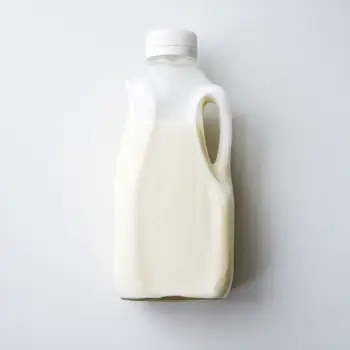Heavy cream is a rich, high-fat dairy product ideal for whipping and thickening, while evaporated milk is a less creamy, caramelized milk used for a lighter texture and unique flavor in cooking and baking.

Heavy cream is the high-fat portion of milk that has been separated from the lighter, milkier parts. It contains about 36-40% milk fat and is often used in recipes to add richness and creaminess.

Evaporated milk is canned milk with 60% of the water removed. It has a caramelized flavor and a thicker consistency than regular milk but is less creamy than heavy cream, with a milk fat content of around 6-8%.
Heavy cream is richer and thicker due to its high-fat content, giving it a velvety texture ideal for whipping and thickening sauces. Evaporated milk, while also creamy, is less dense and has a slightly cooked taste, which adds a unique flavor to dishes.

Your ultimate Recipe Box, Meal Planner, and Cooking Class all in one
Best used in whipped toppings, mousses, and ganaches. Expect a lush and airy texture when whipped, and a smooth, rich consistency in ganaches. Tip: Chill the cream before whipping to achieve maximum volume. Ideal for pumpkin pies, fudge, and sweet puddings. Anticipate a dense, creamy texture with a hint of caramel. Tip: Mix with an equal amount of water to mimic the consistency of fresh milk for certain recipes.
Choose for creamy soups, alfredo sauces, and reductions. Heavy cream adds a luxurious texture and doesn't curdle easily under heat. Tip: Add cream at the end of cooking to prevent separation. A healthier alternative in chowders, bechamel sauce, and creamy casseroles. It offers a similar creamy consistency without the extra fat. Tip: Add a pat of butter to mimic the richness of cream if desired.
Perfect for making rich, indulgent coffee drinks, Irish creams, and homemade ice creams. Provides a luxurious mouthfeel and decadence. Tip: Float a spoonful on top of your coffee for a special treat. A lighter option for tea and coffee that still imparts creaminess. Can be used in smoothies and milkshakes as a milk substitute. Tip: Sweeten with sugar or honey to enhance the beverage.
Heavy cream is significantly higher in fat and calories than evaporated milk.
| Nutrient | Heavy Cream ( per 100g ) | Evaporated Milk ( per 100g ) |
|---|---|---|
| Fat | 37g | 7.6g |
| Sodium | 41mg | 106mg |
| Calcium | 100mg | 270mg |
| Protein | 2.8g | 6.8g |
| Calories | 345 | 135 |
| Carbohydrates | 2.7g | 10.4g |
No, evaporated milk does not have the high fat content required to whip into stiff peaks like heavy cream.
Yes, it is a lower-fat, lower-calorie alternative that can provide a similar creamy texture in many dishes.
They can sometimes be used interchangeably, but because of the difference in fat content, the texture and flavor of the baked goods may be affected.
Unopened evaporated milk can be stored in a cool, dry place while heavy cream should be refrigerated. Once opened, both should be refrigerated and used within a few days.
Yes, there are plant-based creams and condensed milks made from soy, almond, coconut, and other alternatives for those with dietary restrictions.